A Response to JTBC’s Fact Check, Part I: 2020 Election Fraud in South Korea
2020-5-17, Tara O
JTBC has mentioned the World Tribune, Dr. Gong Byung-ho, and me in its efforts to discredit those who are raising the issue of election fraud in South Korea. JTBC brought up three important issues in its reporting:
- Election fraud in South Korea
- Truth about the impeachment of South Korea’s president Park Geun-hye
- “South Korean President Moon is a spy”
I am glad that JTBC brought up these topics, because the mainstream media in South Korea as well as major political parties have been relatively silent, especially given the seriousness of these issues. I believe a proper response should address these points.
Embedded in the discussions of the above topics are: Free and fair elections, the rule of law in South Korea, & subversion. Today’s focus is on the first topic, 2020 Election Fraud in South Korea.
Election Fraud in South Korea
JTBC stated that South Korean domestic media had already concluded there was no fraud at all, describing the election fraud issue as a conspiracy theory. How can the domestic news “already conclude” there was no fraud in South Korea’s April election? It is not an investigative organization and not a judiciary body.
Further, South Korea’s main media hardly covered the topic, although a few more major news outlets are beginning to cover the election fraud issue after JTBC aired this topic. Of course the media’s near silence is understandable, when the police arrest a journalist (Sung Sang-hoon) on the 13th of this month for saying “maybe he died of coronavirus,” of a Chinese man who just fell over and died in early February. Without covering the election fraud issue, however, how can all the domestic media “conclude” that there is no election fraud, unless they are forced to make that conclusion?
University of Michigan Professor Walter Mebane, an expert in detecting election fraud, used his statistical model to show that fraud occurred in South Korea’s 2020 elections. His model showed more than a million fraudulent votes. His report is here. Here is a partial list of items that makes voters ask themselves “what happened to my vote?”
- More votes cast than the number of registered voters in the Republic of Korea
- Unmarked ballots were run through a vote counting machine and counted toward the ruling party candidate, instead of being discarded
- The National Election Commission stipulated that Vote counting machines shouldn’t have the ability to communicate, yet the vote counting machine has 4 open USB ports, and at least one machine had a USB mouse plugged into it. USB ports are serious security vulnerabilities and hacking devices have been made to look like any number of innocuous items such as thumb drives, phone cables, keyboards, or computer mice.
- Ballots for Seocho-eul precinct were found in Bundang-eul precinct
- There were issues with vote counting in Buyeo City:
- Buyeo City, Initial vote count:
- Deobureo Minjoo Party: 180
- United Future Party: 80
- Total: 260
- Buyeo City, After rebooting:
- Deobureo Minjoo Party: 159
- United Future Party 170
- Total: 329
- Buyeo City, Initial vote count:
- National Election Commission’s (NEC) “sealing” tape, easily peals off of boxes like a Post-it note, rather than damaging the box like a proper security tape
- Pre-vote ballots were stored in duffle bags inside a gym next to exercise machines instead of in a properly secured and monitored storage area
- CC cameras were not installed in pre-vote ballot storage areas, despite voters’ requests
- After a judge ordered the preservation and transfer of ballots, the sealing tape on the boxes containing the ballots showed signs of tampering. The seal, stamped on the sealing tape, needs to straddle over both the tape and the box, so if the tape is removed, it leaves a partial seal mark on the box. Some boxes had partial seals left on the box. Some tried to re-stamp the seal over the same spot. Some used entirely different boxes–Samlip brand snack boxes.
- Some ballot boxes had holes in the sides.
- Early vote/mail-in vote ballots were transported in open plastic baskets, rather than locked, sealed containers
- The election commission at Yeonsu precinct in Incheon defied the court order and did not hand over early voting ballots for preservation (for future investigations and recounting).
- One voter is given one short ballot and one long ballot, but some ballots of the same types were not completely separated, yet voted.
- These short ballots (for directly voting for candidates, vs. long ballots with 35 parties for choosing proportional representatives) have uneven margins. They lack anti-counterfeiting measures.

The list goes on. What is important in a liberal democracy is that the elections be conducted in a manner that is both free and fair. The integrity of the electoral process and subsequent public faith in the process are vital for the legitimacy of government. These irregularities in the 2020 election have caused many citizens to not trust the process. When South Koreans raise concerns regarding widespread election fraud based on the evidence before them, they are carrying out their rights and responsibilities as citizens of the Republic of Korea.
It is not too late for the media to do their part in restoring confidence, by looking into these matters closely, and informing the public with facts. JTBC and the other major media entities can play a significant role in this crucial aspect of the liberal democratic process, and help the citizens hold their elected officials and the National Election Commission accountable, and thus restore trust in the electoral system.

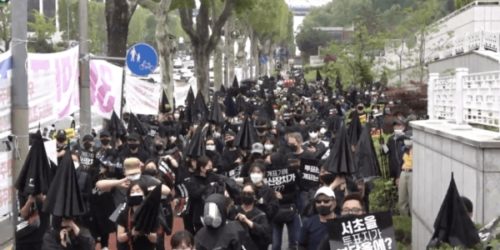
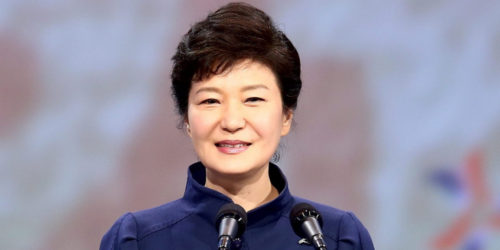
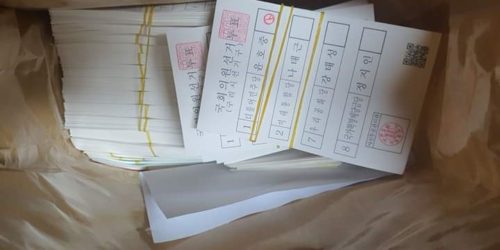

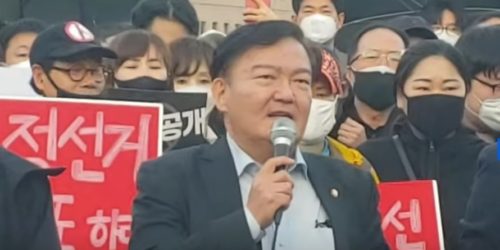
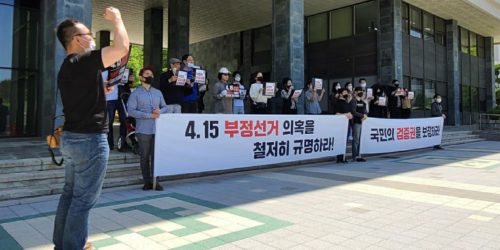
Dr. O,
Thank you very much for your restless efforts in correcting South Korea situations. Bluntly, I just like to add that use of the QR code instead of the bar code as specified in the election (commission) law should be included for the potential fraud schemes. As to potential scenario of hacking or computerized communications by any ill intended entities, I recommend to watch 이봉규tv’s multiple Benjamin Wilkerson interviews. Ben seems to be a genius and an experts in most of computer related stuffs. I will stop here to make it brief I thank you again and God bless you and us all. ~Yoon>
Thank you so much for your relentless pursuit of truth. Korea’s democracy has been murdered by Moon Jaein and handful of his henchmen, who are none other than hardcore communists. Many Koreans have come to realize that these thugs have purposefully destroyed economy, political stability and many vital aspects of the society. The only way to fight back was the election, and they deprived their own citizens of that very last resort. Korean people were robbed. Moon and his henchmen are suppressing the mass media so that the general public may not have access to this critical information. I think it’s time for Korean Americans like you to spread the words to American media and political arena to press Moon to open up to investigation. If a thorough investigation is conducted, the truth will come out.
Thanks Tara. Your efforts are more like a condolence for all those who feel regret to see the fraudulent affair of the president Moon’s government. As you know, JTBC is a broadcast with no journalistic conscience at all. It is just a means of agitation for the Moon’s fanatics of the country. Their conspiracy and deceptive maneuvering to force the blind mass of the nation to bring out the impeachment for the former president is rather to deny their value of a media at all. JTBC’s propagating opinion in ‘World Tribune’ itself is anther attempt to eradicate the minority report on the election fraud. It needs to be fact checked in each word and phrase. It is a broadcast, doesn’t need to be treated a broadcast at all. Again, I would express my deep gratitude for all your good efforts to let the world know of the falsehood of the 4/15 Korean election From the bottom of my heart. God blesses…
Fox news, CNN, ABC, and MSNBC SHOULD report on this Korean 4.15 fraudulent election so as to protect Democracy in Asia from CCP: Chinese Communist party!
Today Hover lab has held press conference for foreign press in Korea but only a few came. This topic although it may seem odd at first, once you dig down to the truth it is crazy… Vast majority of Koreans are not aware of current situation.. We need the help of foreign press like this article. It,s crazy how Korean press is nearly dead… Thank you East Asia research!!
It is so ridiculous that most people in Korea are pretending nothing is happening and they frown upon people who bring this up. Such a shame for a country that boasts it’s wonderful education and technology.